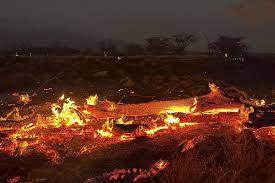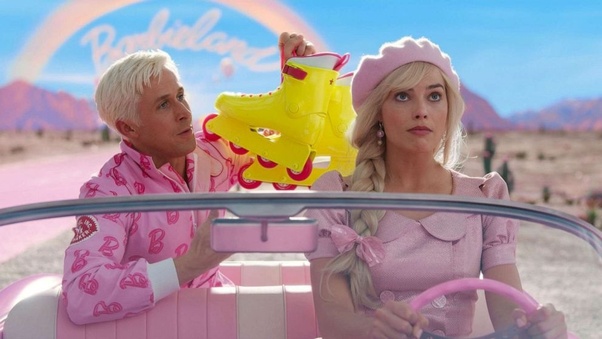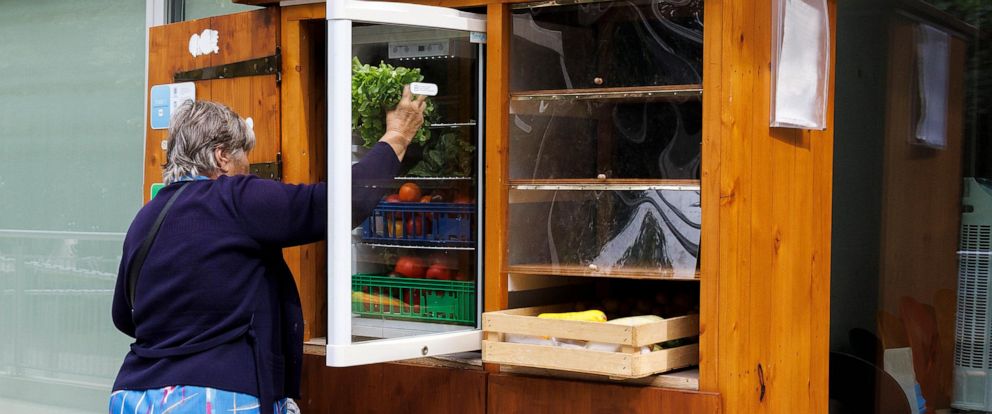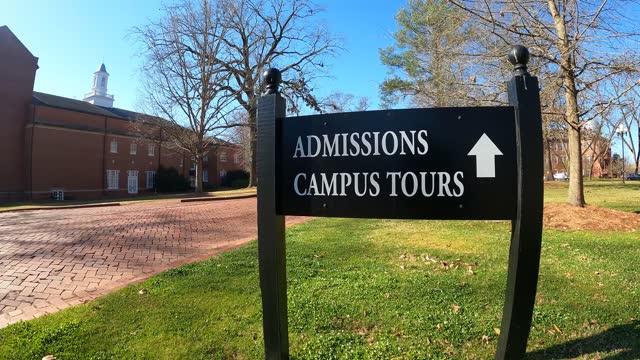뉴스&스피킹(영자신문)
하루 10분이면 영어에 대한 두려움을 극복하고 누구나 유창하게 영어를 구사하실 수 있습니다.
-
 Hawaii Wildfires Kill at Least 55, Recovery to Take Years Wildfires on Hawaii’s island of Maui have killed at least 55 people and destroyed a historic town, officials said.
Hawaii Wildfires Kill at Least 55, Recovery to Take Years Wildfires on Hawaii’s island of Maui have killed at least 55 people and destroyed a historic town, officials said.
The number of deaths is expected to rise even higher. Officials said it will take years to rebuild Lahaina, the one-time capital of the former kingdom of Hawaii.
Governor Josh Green said the fire was the worst natural disaster in the state's history, making thousands of people homeless and burning as many as 1,000 buildings. In 1960, a tsunami killed 61 people in the state.
"It's going to take many years to rebuild Lahaina," Green said at a Thursday news conference.
Lahaina was once the home of King Kamehameha, who united Hawaii under a single kingdom. Kings and queens are buried on the grounds of the 200-year-old stone Waiola Church, one of burned sites.
Lahaina draws 2 million visitors each year, or about 80 percent of the island's visitors.
Fueled by a dry summer and strong winds from a passing hurricane, at least three wildfires burned on Maui this week.
Maui Fire Department Chief Brad Ventura said one fire moved so fast that it was impossible to warn people of the emergency. “What we experienced was such a fast-moving fire ... they were basically self-evacuating with fairly little notice,” Ventura told the Associated Press.
Thousands of visitors and locals were evacuated from the western side of Maui, which has a year-round population of about 166,000. Locals sheltered on the island or the neighboring island of Oahu. And visitors gathered in Kahului Airport, waiting for flights back home.
Some people fled the immediate danger by jumping into the Pacific Ocean.
Among them was Vixay Phonxaylinkham, a visitor from Fresno, California. He said his family was trapped in a car as the fires neared, forcing the family to jump in the water. They held onto pieces of wood to stay above water.
"We floated around for four hours," the man told Reuters from an emergency shelter. "It was a vacation that turned into a nightmare. I heard explosions everywhere, I heard screaming, and some people didn’t make it. I feel so sad," he said.
Many survivors suffered burns and other injuries.
"It was so hot all around me, I felt like my shirt was about to catch fire," said Nicoangelo Knickerbocker, a 21-year-old from Lahaina. Knickerbocker heard cars and a gas station explode. He fled from the town with his father and the family dog. "It sounded like a war was going on," he said.
Officials said Thursday that they have contained about 80 percent of the Lahaina fire. There was no immediate estimate for others. However, experts say the fires are likely to change Hawaii in unwanted ways. They include a threat to coral reefs, drinking water, and its soil.
Wildfires, often caused by record-setting heat, have become more common around the world this summer. They forced the evacuation of tens of thousands of people in Greece, Spain, Portugal and other parts of Europe. In western Canada, several unusually severe fires sent clouds of smoke over a large part of the United States, polluting the air.
I'm Dan Friedell.View -
 ‘Barbie’ Is Changing the Clothes People Wear If you walk into a clothing store, you are likely to be hit with an explosion of the color pink.
‘Barbie’ Is Changing the Clothes People Wear If you walk into a clothing store, you are likely to be hit with an explosion of the color pink.
The pink wave has been fueled by the release last month of the wildly successful film Barbie. The movie is based on the popular doll of the same name, made by the toy company Mattel.
Barbie dolls are known for their bright pink color. And clothes based on what the toy wears have become hugely popular. People are calling them Barbiecore outfits.
Barbie clothing items include shoes, backpacks, swimsuits and even special clothes for dogs.
"There is not a corner of the globe that hasn't turned pink," said Richard Dickson, Mattel's president and chief operating officer.
The pink wave actually began last year, but Barbie strengthened it. High-end designer Valentino kicked off the pink wave by dressing models in head-to-toe in a pink color called fuchsia for a runway show in March of 2022.
A few months later, photos showed Barbie movie star Margot Robbie on set in a hot pink Western outfit. The look got a lot of attention online, said Madeline Hirsh. She is news director for the fashion magazine InStyle.
Around the same time, more and more people were returning to their workplaces and doing more social things as COVID-19 restrictions eased.
Hirsch said, “People were craving joy, color and new clothes to wear out again…”
The style took off. Fashion magazines published pictures of famous stars, including Kim Kardashian and Harry Styles, in bright Barbie-inspired clothes.
Barbie stylized items
Barbie is one of Mattel’s top three brands. The toymaker trademarked the word Barbiecore in 2022. It also partnered with companies such as high-end French designer Balmain, Kendra Scott, and Barefoot Dreams.
Those efforts went into full force in 2023, with more than 100 partnerships tied to the movie. Mattel has also worked on many products outside of fashion, such as an Instagram-perfect pool float from Funboy and a pink Microsoft X-box gaming device in a Barbie Dreamhouse.
There are even Barbie-centric foods. They include an ice cream flavor and a Barbie Burger with pink sauce sold at Burger King fast food restaurants in Brazil.
I’m Gregory Stachel.View -
 To Cut Food Waste, Switzerland Tries Public Refrigerators A nonprofit group in Geneva, Switzerland is making refrigerators available so restaurant owners and cooks can make food available to the public before it goes bad.
To Cut Food Waste, Switzerland Tries Public Refrigerators A nonprofit group in Geneva, Switzerland is making refrigerators available so restaurant owners and cooks can make food available to the public before it goes bad.
The refrigerators are being placed along streets for anyone to use. The project is part of a continuing effort by people in Switzerland and other European countries to cut down on food waste.
The nonprofit Free-Go has put refrigerators and food storage centers in Geneva so people can get fruit, vegetables, breads and other foods at no cost. Free-Go is a smart play on the word “frigo,” which is an informal French word for refrigerator.
The program costs about $40,000 to run each year. It receives support from private groups and the city government. Free-Go launched a year ago with a single refrigerator outside a community center in western Geneva. There are now four refrigerators around the city. The group plans a fifth before the end of the year.
Marine Delevaux is the project’s director. She said the food left in its refrigerators is usually taken within an hour of being left. For health and legal reasons, no frozen foods, open food containers, prepared meals, or alcohol are permitted in the refrigerators.
Free-Go also lets people who use the service plan when they will get their food. The idea is to make it easier for people who live in apartment buildings to join the program. There is also a telephone line, or “hotline,” that restaurants can use to call for someone to pick up unused food.
“Generally, when the food collected from shops and restaurants arrives in the morning, people are already waiting to help themselves,” Delevaux said.
She added that the first Geneva refrigerator helped save 3.2 tons of food from going to waste last year. Of the food donated, only about three percent had to be thrown away because nobody wanted it.
Free-Go said those who give food from private businesses, like restaurants or food sellers, must promise to make sure the donated food is safe to eat. Swiss law says food past the “recommended use-by” date can be eaten for up to a year afterwards, Delevaux said.
The Swiss government estimates that nearly one-third of all food products are wasted or thrown away. That amounts to about 330 kilograms of food waste per person each year. Of that, about 100 kilograms are waste from households.
Free-Go says about 1 billion tons of food go to waste every year around the world. The group says the waste uses up energy and other resources in the farming and transportation process.
“Wasting food is not only an ethical and economic issue but it also depletes the environment of limited natural resources,” the European Union’s Commission said.
Similar food-sharing campaigns are in place in the Swiss capital, Bern, and in the town of Neuchatel. The idea was first imported from Germany.
Foodsharing.de is a community group in Germany that started more than 10 years ago. It said that more than half a million people in Germany, Switzerland and Austria have made “the food-sharing initiative an international movement.” The group said it has helped save 83 million tons of food from going to waste.
Because the food is free, and the donations can change, it is not always clear what will appear in the refrigerators. Some people receiving food might not get what they want or need.
Outside a community center in Geneva recently, Shala Moradi said she was looking for some bread and there was none. She is 65 years old and came from Iran. She has lived in Geneva for 10 years. She said she appreciates the initiative.
“It’s very good. I can take strawberries, cherries, things like that,” she said, talking about the different food that is available. Of the no cost food, she said, “I like that too.”
Severine Cuendet is a 54-year-old teacher. Just after leaving some vegetables that she grew, she said, “We have too much” and praised the initiative “because this neighborhood has a lot of need.”
She added, “And it happens to all of us to buy too much.”
I’m Gregory Stachel. And I'm Faith Pirlo.View -
 US Colleges Ask for More Writing after Affirmative Action Ban August 1 is the start of the new college admissions season in the United States. It is the day students can start to complete the Common Application for college admission in 2024.
US Colleges Ask for More Writing after Affirmative Action Ban August 1 is the start of the new college admissions season in the United States. It is the day students can start to complete the Common Application for college admission in 2024.
The Common Application is accepted by over 1,000 colleges and universities. The service permits students to apply to many schools by submitting their information only one time.
However, some colleges and universities that accept the Common Application are asking students to send in an extra piece of writing. They are using the extra “prompt” to give students a chance to discuss their background.
The reason for this new writing prompt is the U.S. Supreme Court’s recent decision to end affirmative action in college decisions.
The court said selective colleges and universities, such as Harvard University or the University of North Carolina at Chapel Hill, can no longer use race as a way to decide between two qualified students.
But the court did say schools can consider “an applicant’s discussion of how race affected his or her life…”
That is why some schools are re-writing their prompts.
At Yale University, students who apply with the Common Application must also answer one of three questions.
The first question permits students to write about a time they discussed an important issue with someone holding an opposing view.
Another question asks students to discuss a meaningful community to which they are connected.
But a third question is new, compared to past years. It asks students to talk about part of their “personal experience that you feel will enrich your college.”
That question permits a student to state their race and discuss how they would add something special to the group of students at Yale.
At Emory University in Atlanta, Georgia, a new prompt asks students to “tell about a community that you have been part of where your participation helped to change or shape the community for the better."
Timothy Fields is a top admissions official at Emory. He said the new questions “are going to be much more targeted.”
At Sarah Lawrence College outside of New York City, a new question asks students how the Supreme Court decision on affirmative action might affect their lives.
Kevin McKenna is a vice president at the college. He said the new question gives students a chance to discuss the decision “that could impact the student bodies of the colleges to which they are applying.”
An acceptance campaign
In addition to the new questions, many colleges and universities are thinking about how to connect with Black and Latino students. The school leaders worry that those students may think they are no longer welcome at selective universities after the Supreme Court decision.
Amin Abdul-Malik Gonzalez is the top admissions official at Wesleyan University in Connecticut. He and his team are planning extra time at high schools and more meetings at college information events to tell minority students they are still welcome.
He also will offer more training to his admissions officers so they can work to build a diverse group of students without going against the Supreme Court’s decision.
Visits such as those by the Wesleyan team are important, said Angel Perez. He is head of the National Association for College Admission Counseling. Perez said some college counselors for high school students are uncertain how their students should address their race in applications.
“The general feeling with school counselors right now is mostly anxiety,” he said.
But those who work with students, like private admissions counselor Shereem Herndon-Brown, say students should not overstate how race affects their lives.
Herndon-Brown wrote a book with Fields, the admissions leader at Emory. He said students need to write “authentically” about how they think and have developed as a result of their background.
He gave an example of a Black student from New York who recently visited relatives in the southern part of the U.S. Herndon-Brown encouraged the student to write about that experience although it was not in the student’s original plan.
That he said, is a better idea than declaring their race or overstating their disadvantage.
“There is no way to trick an admissions officer or a school into believing you’re something that you’re not,” he says.
I’m Jill Robbins. And I’m Dan Friedell.View -
 Economists Wonder If Few or Many Will Benefit from AI Throughout history, technological progress has brought new wealth but has not always improved people’s lives. Economists now say it is not clear whether artificial intelligence (AI) will help or hurt society.
Economists Wonder If Few or Many Will Benefit from AI Throughout history, technological progress has brought new wealth but has not always improved people’s lives. Economists now say it is not clear whether artificial intelligence (AI) will help or hurt society.
Simon Johnson teaches economics at the Massachusetts Institute of Technology near Boston. He said AI has a lot of possibilities. But he added, “We are at a fork in the road.” A fork in the road is an expression used to describe a situation where the outcome is uncertain.
Wealth, jobs and productivity
McKinsey is a business consulting company. It said AI could add between $14 trillion and $22 trillion of value to the world’s economy.
Supporters say the technology will create wealth and improve living standards. Some go as far as saying AI will increase people’s free time and help them be more creative.
But others are worried the technology will lead to lost jobs. They point to Hollywood writers and actors who are worried that they will be replaced by technology.
The internet arrived with a similar promise of more productivity, wealth and jobs. Last month, the French bank Natixis noted in its research that most of the wealth has gone to a few billionaires. And many of the jobs do not require highly paid, skilled workers.
The bank warned in its report, “We should be cautious when estimating the effects of artificial intelligence on labor productivity.”
In July, the Organization for Economic Cooperation and Development released its opinion research of 5,300 workers about AI. Some workers hope the technology will increase pay and job satisfaction. But they are also concerned that the technology could push people to work too hard.
Lessons from history
Such concerns are not unfounded. History has shown the economic impact of technological progress is generally uncertain, unequal and even harmful.
Johnson recently published a book, Power and Progress, with Daron Acemoglu, another economist from MIT. They studied technological progress over the last 1,000 years including clothing production, train travel, and even food shopping.
The two economists looked at an invention called the spinning jenny that made it easier to turn cotton and wool into yarn. They said the device helped clothing production and created wealth for many people in the late 1700s. However, it also increased the demand for cotton and led to longer hours for workers. The demand also led to the growth of slavery in the southern United States.
Johnson noted that it is easier to create something new than to make sure it works for everyone. His book shows how the arrival of rail travel improved the lives of many people in England in the 1800s. People were able to travel longer distances and eat fresh food because it could move faster from farms to cities.
On the other hand, Johnson said self-checkout technology at food stores does not lower the cost or make life easier for people. All it does is reduce the number of workers and help businesses lower labor costs.
As for AI technology, Johnson wonders if it will make existing inequalities worse, or “could it help us get back to something fairer?”
I’m Dan Friedell.View

